Raised
on Saracen
Raced
on Saracen
Retrained
on Saracen
Feeding the Former Racehorse
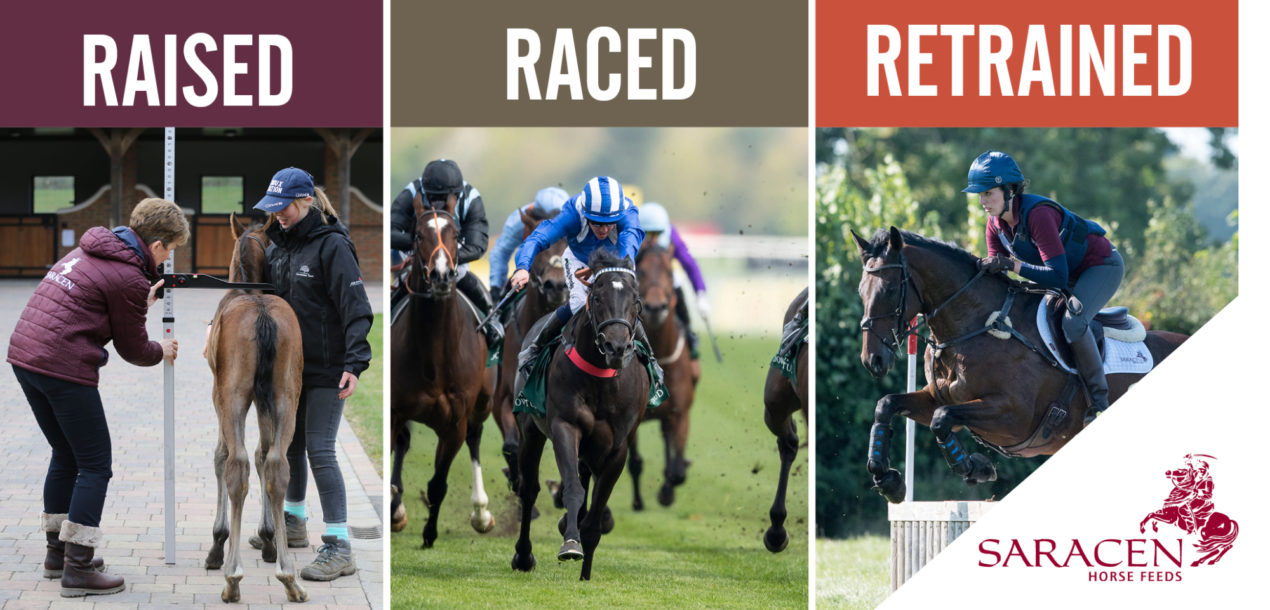
We all know that Thoroughbreds can often be thought of as tricky characters, but taking on a former racehorse can be a hugely satisfying and rewarding experience, even if it is a little challenging at times. They are highly intelligent, naturally athletic, willing and very adaptable, as long as they are given the time and the patience to settle into their new environment. Because of their background, they have usually been well handled from a very early age and have already been exposed to a variety of different situations, even if they arrive without much mileage on the clock in terms of the number of times they actually raced.
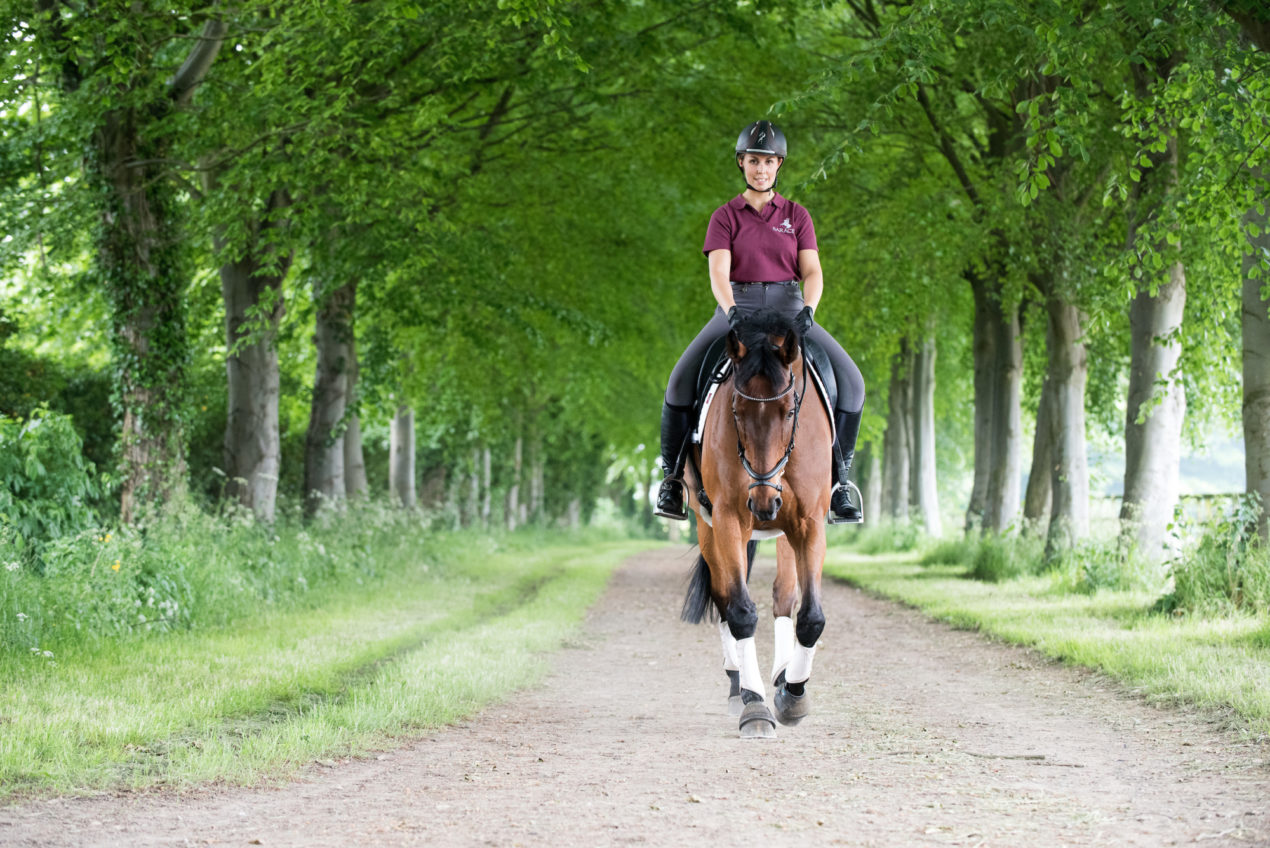
Like all breeds, a thoroughbred should be treated as an individual and it's worth being aware that they may react differently compared to their peers to any new management and feeding regime. Each horse has its own individual personality, but it helps to understand that their lives are all about strict routines in training, regardless of the size of the training yard - it is just what they are used to. We recommend that you try and obtain as much information as you can about feeding and exercise programmes and daily routines before they arrive with you. This will help you to understand their character, get prepared and to make the changes as gradual as possible as you transition your new horse to their new career and lifestyle.
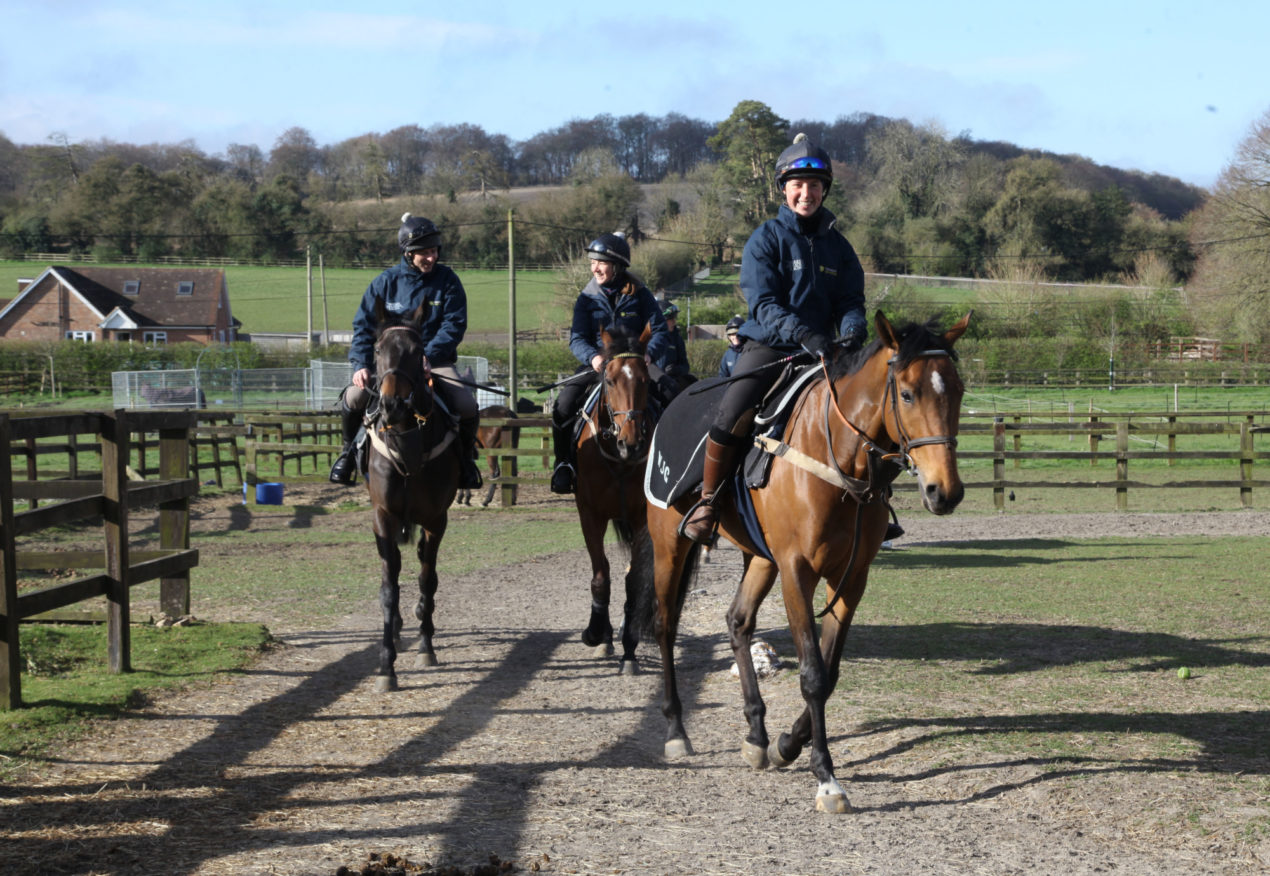
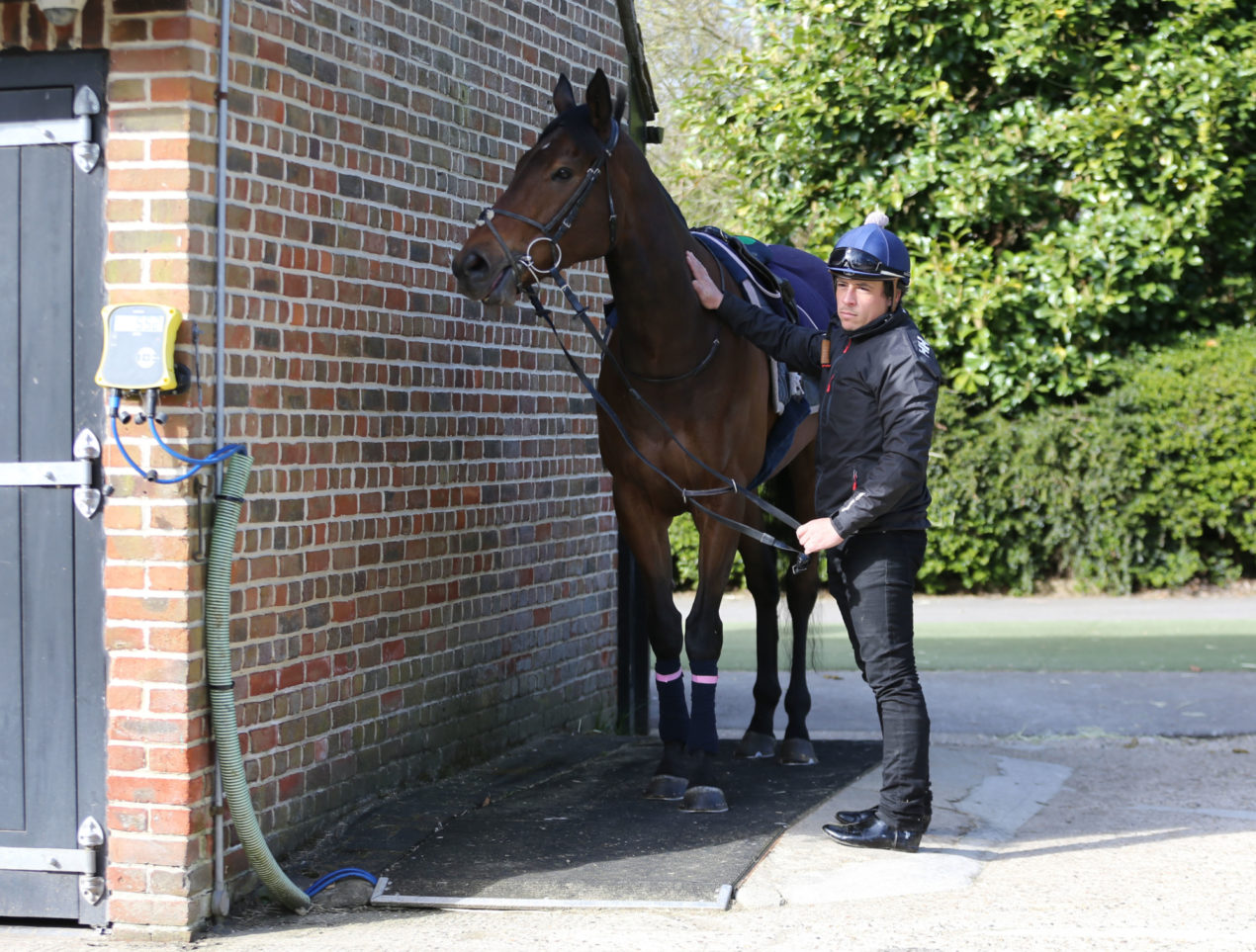
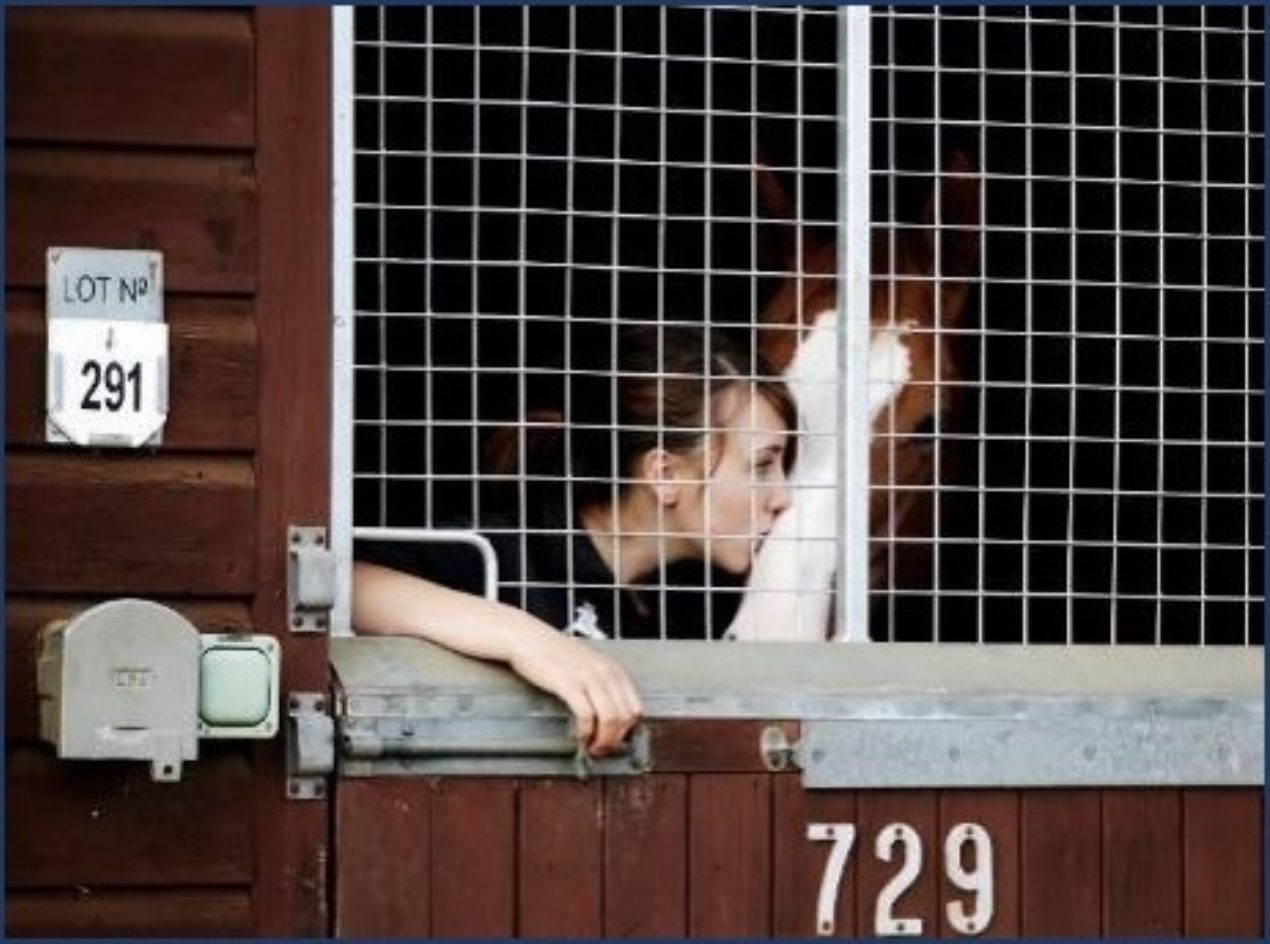
FORAGE
It is important to introduce pasture very gradually, especially if turnout has not been part of their daily routine
The diet of a racehorse is much lower in forage than leisure and competition horses, and depending on where they were trained, they may not have been turned out to grass for many months. On arrival at your yard, you will no doubt be introducing your new horse to routine turnout, which will not only mentally start to relax him, but will also gradually increase the forage portion of the ration. Be patient and remember that all racehorses have a definite routine, so spending more time in a stable is what these horses are used to and they can take time to adjust.
We recommend that you provide your new horse with ad-lib hay, but you may find that to start with he does not eat everything you offer him. Thoroughbreds can be fussy feeders and he may take a few days or weeks to get used to his new diet, so be patient. Making dietary changes over a period of 2-4 weeks is an ideal timeframe.
It is also advisable to have your dentist or vet check his teeth shortly after arrival. This will not just help with bitting choices later on, but will also ensure he is able to fully chew and break down his feed and forage, aiding digestion and helping you to see an improvement in his condition a little more quickly.
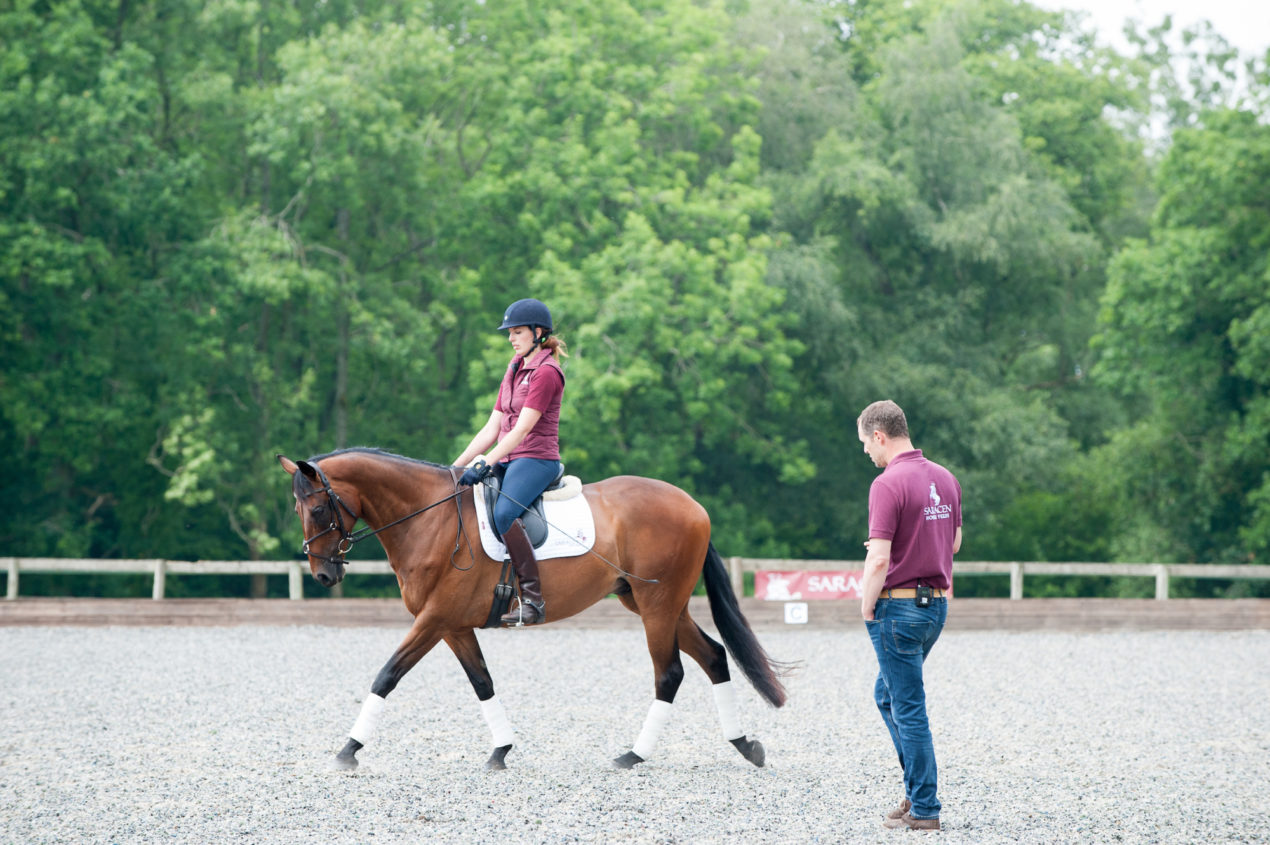
ENERGY & BODY CONDITION SCORING
ENERGY & BODY CONDITION SCORING
Condition scoring is a method of assessing your horse's body fat coverage and should form part of your routine management plan. With practice, condition scoring is an accurate way of ensuring that your ex-racehorse does not gain or lose too much body condition and shows results far more quickly than by the eye alone. This enables you to make any dietary adjustments before a problem has occurred. We recommend that condition scoring is carried out on a fortnightly basis in conjunction with weight taping.
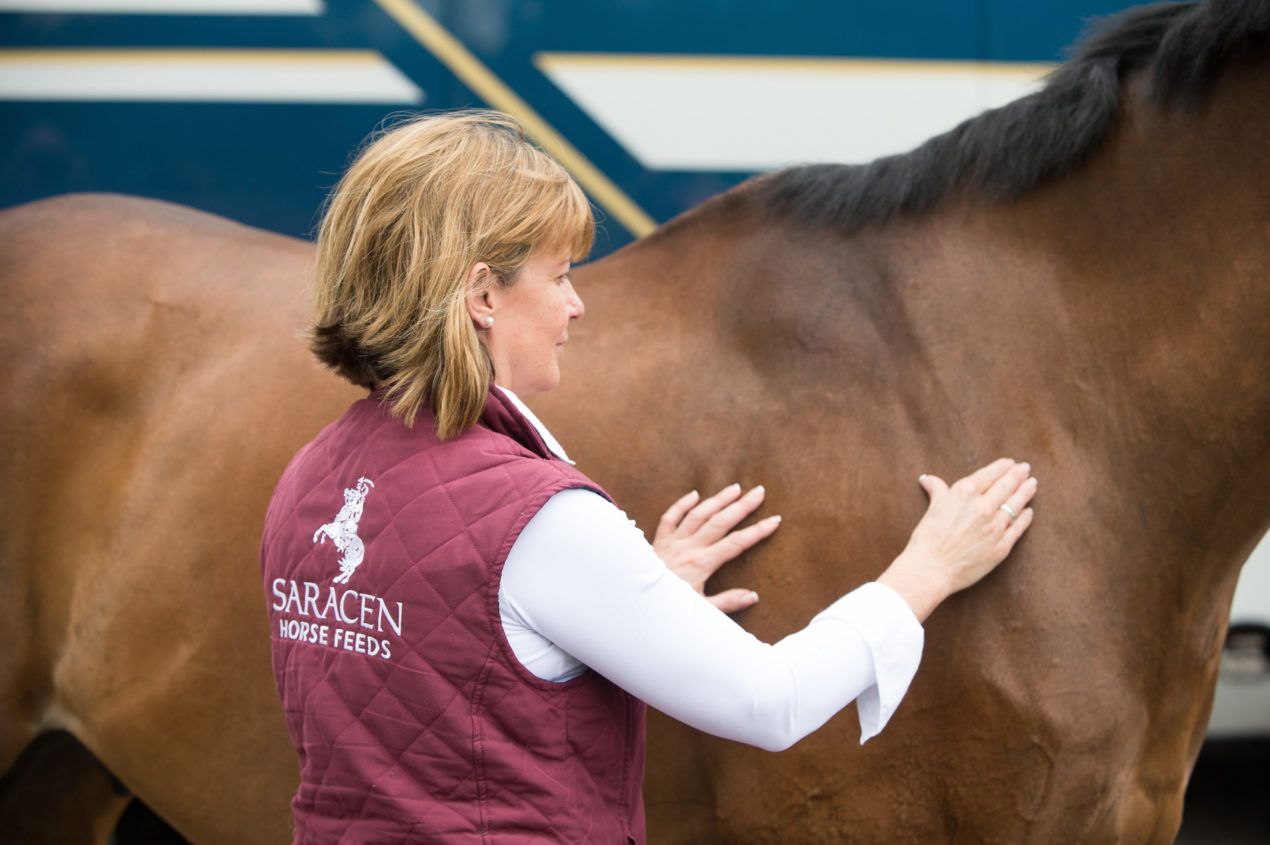
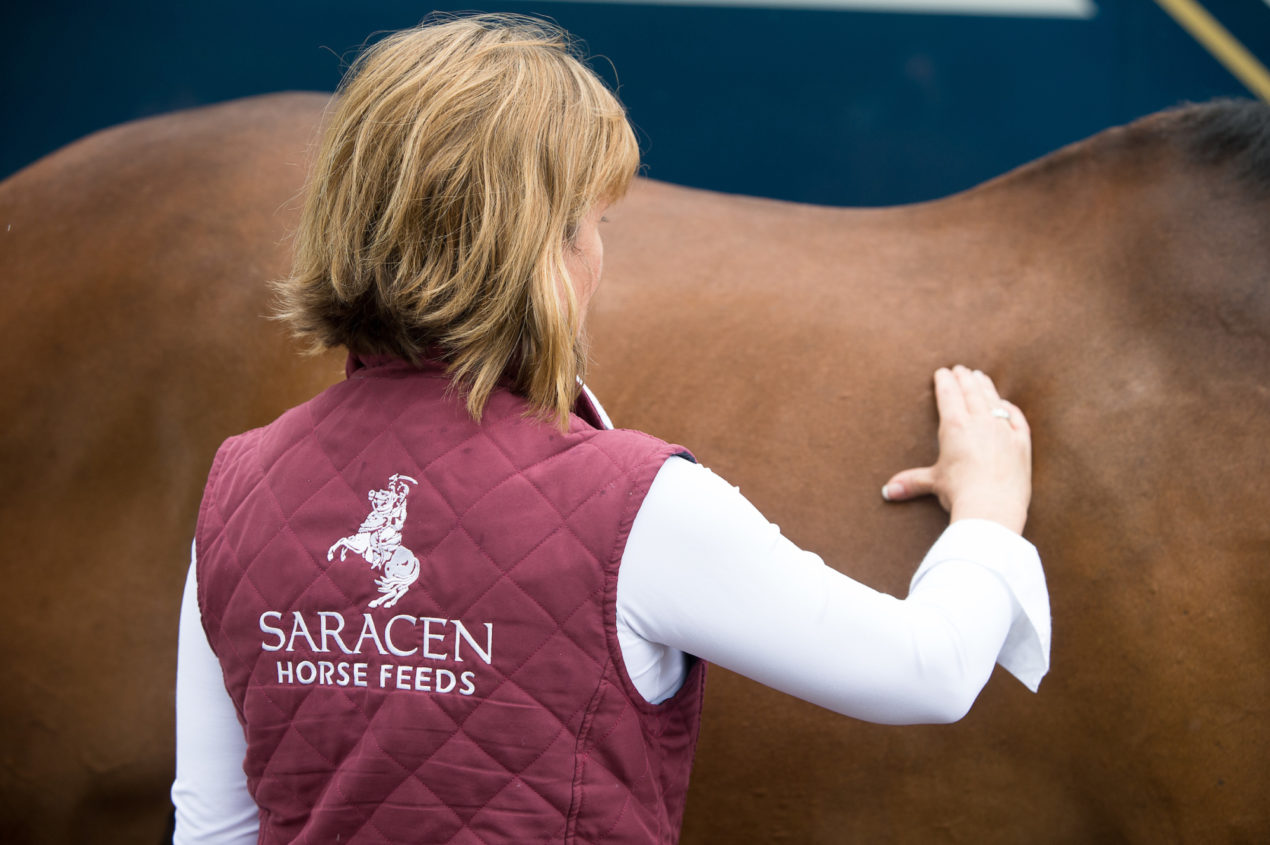
Which Saracen Feed For Weight Maintenance?
The main error that many owners make when feeding a horse fresh out of training is to place them on a horse and pony mix or cube simply because it is low in energy. Many ‘simple’ horse and pony mixes are based on a cereal formulation, which can cause a thoroughbred to ‘hot up’. There is also the misconception that too much protein can affect a horse - protein is used for cell renewal, tissue and muscle repair and it is important that optimum levels of quality protein are included in the ration.
What is important is where energy is being sourced. All of the Saracen feeds that we recommend for the ex-racehorse use ‘non–heating’ highly digestible 'super-fibres' and oil as the main sources of energy, removing the need for high levels of cereal. Each feed can be fed alongside a comprehensive range of chaffs as well as sugar beet, if you wish.
We recommend diets high in 'super-fibres' and lower in cereals
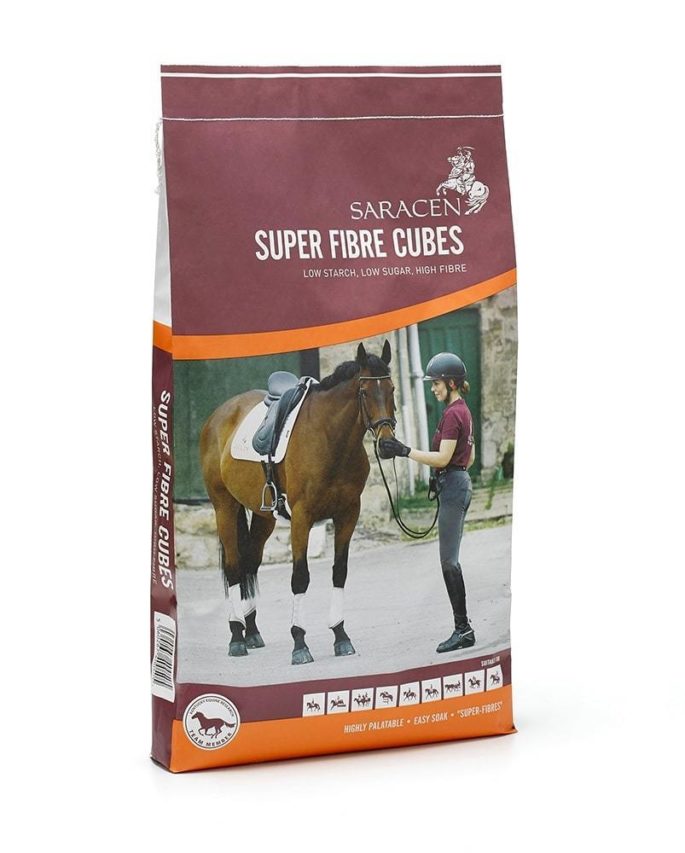
Super Fibre Cubes are a good starting point for any ex-racehorse and are a great way to start increasing the fibre content of the diet. The cubes have a low-starch and sugar content and are cereal free, helping to maintain an even temperament, as well as supporting good digestive health. Soya oil is used within the formulation to support skin and coat condition. They are the ideal feed to start your ex-racehorse on where simplicity is required.
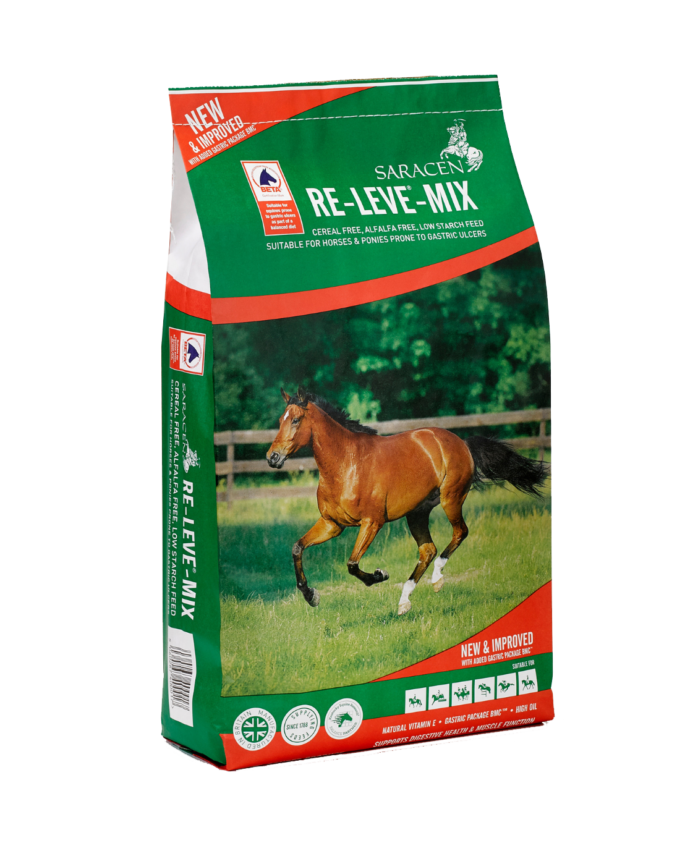
RE-LEVE®-Mix and RE-LEVE®-Cubes are high-fibre, low-starch, cereal-free feeds. Highly digestible ‘super-fibres’, soya hulls, beet pulp, and oil supply the energy, reducing the reliance on starch. Some ex-racehorses can have excitable tendencies and feeding low starch feeds can help maintain an even, more trainable temperament. Re-Leve really helps because it keeps horses calm. During research trials, horses fed Re-Leve had a calmer demeanour during standardised exercise tests. Before the exercise started, they had lower heart rates. So it is possible to change behaviour by the type of energy you feed.

Re-Leve is also fully fortified with a concentrated source of proteins, trace elements as well as yeast to support optimal fibre digestion and elevated levels of important antioxidants, Vitamin E and selenium, to support normal muscle function.

Conditioning Cubes are a moderate starch feed formulated to support optimum muscle and topline development, and the barley-free formulation helps to maintain a steady temperament, ideal for ex-racehorses. The cubes also contain EQUI-JEWEL®, a high fat stabilized rice bran, which has been blended into the feed to increase the calorie content and to provide a source of essential fatty acids to support healthy skin and coat shine. This is a non-heating formulation for all over body condition and optimal muscle tone.
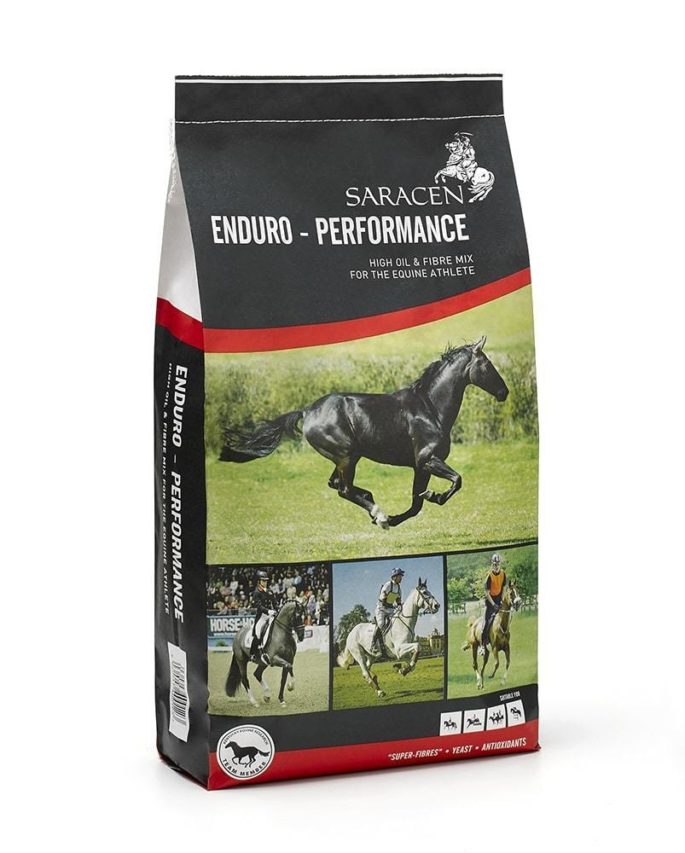
Enduro-Performance provides long-lasting energy for horses that require good stamina levels. Many ex-racehorses go on to do a variety of different careers and may need a feed to provide a higher level of energy to support this work. Enduro-Performance contains an inclusion of oats for a higher energy requirement, but the emphasis remains on highly digestible 'super-fibre' ingredients, such as soya hulls and beet pulp and oil, which releases energy slowly supporting controlled performance. A yeast is also included to support optimum calcium absorption and fibre digestion, along with important antioxidants to support muscle recovery post exercise.
To ensure your horse receives adequate amounts of essential vitamins and minerals, the above feeds must be fed at the recommended daily intakes. Otherwise, you can use a balancer pellet (like Essential Balancer) alongside if you are feeding low intakes. If you are unsure of the correct amount, please don’t hesitate to ask the Saracen Nutrition Team.
Quick feed comparisonKeep starch intake to 1 g or less per kg of bodyweight to reduce risk of gastric ulceration
Quick Feed Comparison
| Feed | Protein g/kg | Starch g/kg | Oil g/kg | Fibre g/kg |
|---|---|---|---|---|
| Re - Leve | 130 | 80 | 100 | 195 |
| Super Fibre Cubes | 100 | 105 | 35 | 220 |
| Conditioning Cubes | 135 | 210 | 60 | 130 |
| Enduro-Performance | 110 | 200 | 100 | 125 |
All our recommended feeds provide a low intake of starch per meal. To help reduce risk of ulceration or hindgut acidosis from starch loading, you should ideally keep starch intake to 1 g or less per kilogram of bodyweight in each meal. For a 500 kg thoroughbred, this equates to feeding no more than 500 g of starch in each meal. All of the recommended feeds provide significantly less than 500 g of starch when fed at 1 or 2 kg in a meal, making them ideal for gastric health and hindgut health.
Daily Feeding rates (based on 500kg TB in light work and ad-lib forage)
- Super Fibre Cubes 2-2.5 kg/day
- Re-Leve Mix or Cubes 2.0 kg/day
- Conditioning Cubes 2.0 kg/day
- Enduro-Performance 2.0 kg/day
Remember to weigh your feed scoops to know exactly how much you are feeding.
WHICH SARACEN FEED FOR WEIGHT GAIN?
Equi-Jewel supports topline development and builds condition
When a horse’s workload increases and energy demands are raised, or your ex-racehorse requires more calories to support optimum body condition, the above feeds can be topped up with EQUI-JEWEL®. This can be added to the feed and can be fed up to 1kg per day (2 - 5 Equi-Jewel® measuring cups).
Equi-Jewel is pelleted, high-oil, stabilised rice-bran supplement designed to increase the calorie density of any ration. Equi-Jewel® is an ideal product to support topline and muscle development, no matter what discipline your ex-racehorse is now competing in.
The essential fatty acids contained in Equi-Jewel® support coat and skin condition and horses receiving Equi-Jewel® will quickly exhibit stunning coat gloss and bloom. Research carried out by Kentucky Equine Research (KER) has also proven its superiority in optimising performance when substituted for vegetable oils. Horses had lower heart rates and subsequent shorter recovery periods after strenuous activity.
Equi-Jewel® is fortified with the correct level of Vitamin E and ensures optimum calcium to phosphorus ratio.
Which Saracen Feed for a Good-Doer?
Essential balancer is low in calories and fortified with vitamins and minerals
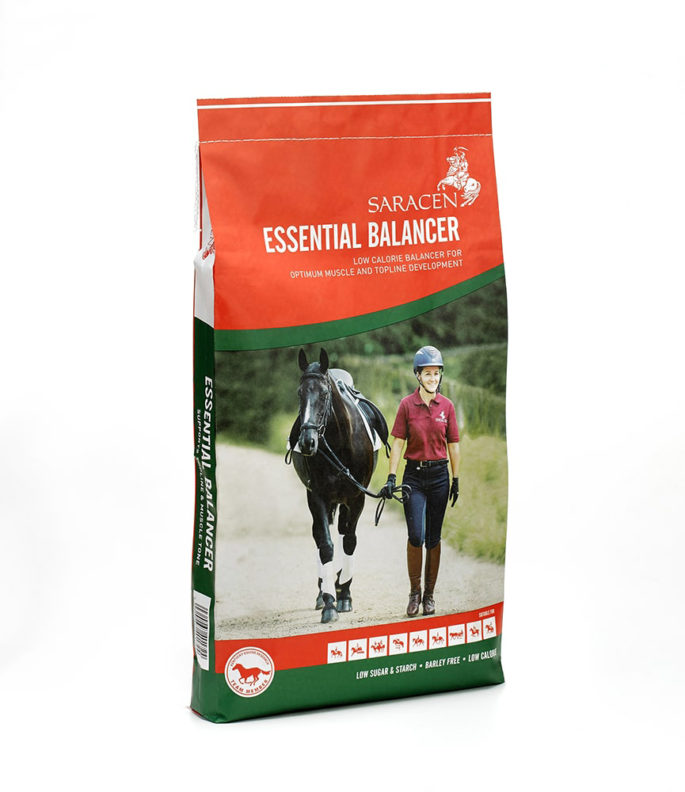
If your ex-racehorse is carrying too much condition, or your pasture is rich, you may wish to reduce the daily intake of concentrate feed, in which case you will need to ‘top-up’ your horse’s ration with essential nutrients (particularly minerals) with a feed balancer.
Essential Balancer is a low-sugar, low-starch balancer that can be fed alongside compound feeds being fed below the manufacturer's recommended levels, or to balance forage only diets.
Dense in vitamins, minerals and quality protein sources, Essential Balancer helps to maintain muscle tone and topline as well as supporting optimum health and vitality. A source of Omega-3 fatty acids helps to condition and shine the coat, creating a picture of health inside and out. A blend of yeast cultures is also included to support a healthy digestive tract and optimise digestion and energy extraction from the fibre sources in the ration.
If you wish to cut out a mix or cubes all together in the summer when the grass is good and extra calories are not required, Essential Balancer can be fed on its own together with good quality forage at a feeding rate of 100 grams per 100 kg bodyweight per day.
FEEDING AN EX-RACEHORSE WITH GASTRIC ULCERS
Feeding an ex-racehorse with gastric ulcers
RiteTrac is designed to regulate acidity of the digestive system making it ideal for ex-racehorses coming out of training
Due to a lower forage intake and high workload during training, many racehorses may suffer from gastric ulcers at some stage of their life. Any form of stress, such as moving yards, can upset the normal gastric balance. Signs can include mild colic, poor performance, bad behaviour, reluctance to be girthed and crib biting. If you feel that your new horse may be suffering from ulcers, it is advisable to contact your vet.

Saracen Horse Feeds are the sole UK distributor for a product developed by Kentucky Equine Research (KER) to support the digestive tract during these times of stress and help to maintain a normal gastric environment. Formulated by the Scientists at KER, KERx RiteTrac™ is a proprietary blend of ingredients with fast-acting antacids, buffers and coating agents to help optimise pH in the stomach, as well as the inclusion of a hindgut buffer to aid digestion
RiteTrac™ contains ingredients that quickly and effectively protect the sensitive stomach lining, preventing the damage caused by the continuous production of gastric acid. The antacids contained in RiteTrac™ rapidly neutralise the acid secreted in the stomach, providing a more pH-neutral environment between meals. Available as a powder in 3kg and 6kg tubs, RiteTrac™ can be simply added to feed at a rate of 120 g/day – 60 g in the morning and 60 g in the evening. It is available to purchase via our online shop.
Improving hoof quality
IMPROVING HOOF QUALITY
Thoroughbreds can often have delicate feet and benefit from supplementary biotin, methionine, zinc and iodine. This combination support new hoof growth and strength. Bio-Bloom PS is a dual-action supplement designed to maintain healthy hooves and skin from the inside out - it is available in 2k g, 4 kg and 10 kg tubs and is fed at 30 g per day. It is available to purchase via our online shop.
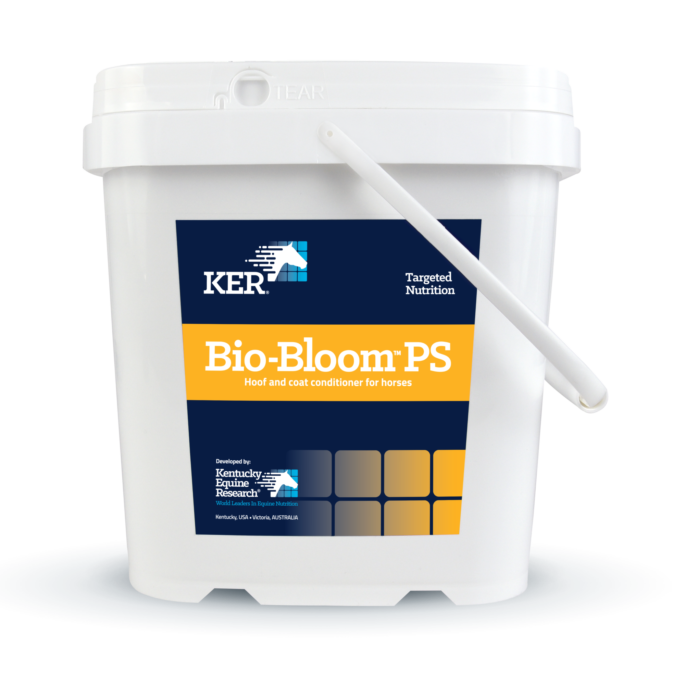
Bio-Bloom™ PS supports healthy skin and hooves through the inclusion of key nutrients at levels scientifically proven to maintain hoof quality and hoof growth, as well as providing lecithin and essential fatty acids from full-fat soybean to support a soft, shiny coat, mane & tail.
A SUMMARY OF GOOD FEEDING PRACTICEs FOR THE EX-RACEHORSE
- Make all changes to their diet as gradually as possible, preferably over 2-4 weeks at the very start of them coming out of training
- Remember, forage is the most important element of an ex-racehorse’s daily feeding plan
- Watch for signs of stress or ulcers, and treat as found
- Feed little and often, splitting feeds into at least 2 or 3 meals daily, if possible
- Keep starch intake to 1g/kg of bodyweight or lower per meal
- Offer a variety of fibre sources to your ex-racehorse if they are poor feeders to stimulate their appetite. Offering beet pulp and chaff in a separate fibre bucket is an easy way to provide additional highly digestible fibre in the diet whilst providing variety
- Do not mistake protein for the cause of excitable behaviour
- Keep them warm enough in the winter to help them to hold their condition - they will have been well rugged in training and can be quite thin skinned
- Please ask for advice - we want to help you to understand the best way to feed them to get the best possible response
If extra energy is required on top of your main ration, or your horse requires substantial help to support body condition or topline, consider adding Equi Jewel® to the ration, starting at 0.4 kg/0.88 lbs (2 CUPS) per day.
Please visit our SARACEN EX-RACEHORSE facebook page for more information and practical tips FROM INDUSTRY EXPERTS - we are here to help, every step of the way.
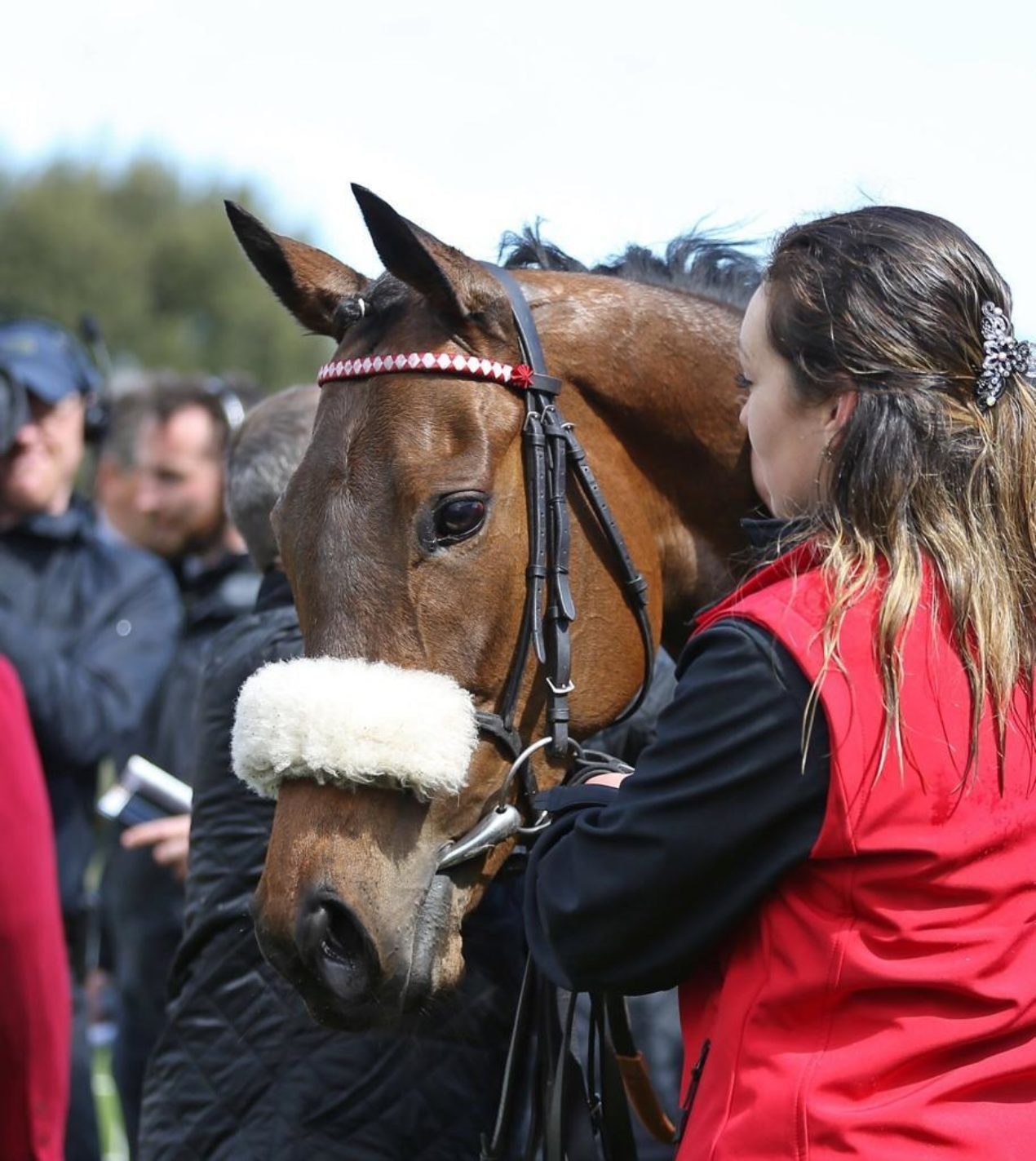


Jump to:
Retraining Your Ex-Racehorse
Join our Facebook community for support. stories and tips about managing the ex-racehorse











